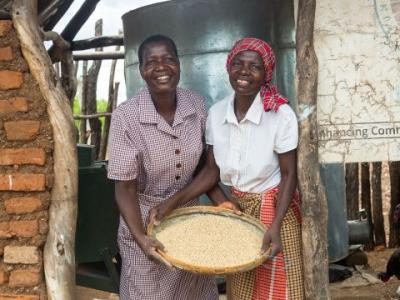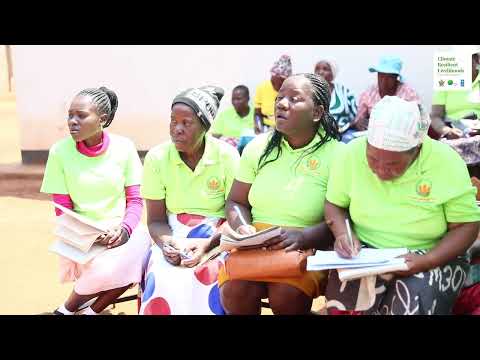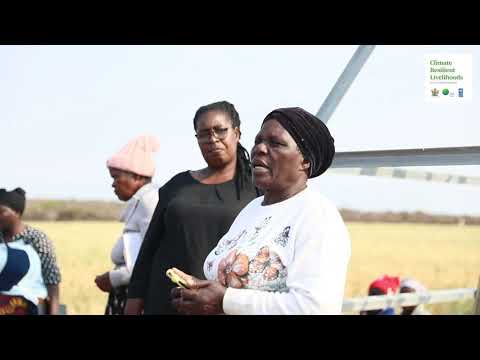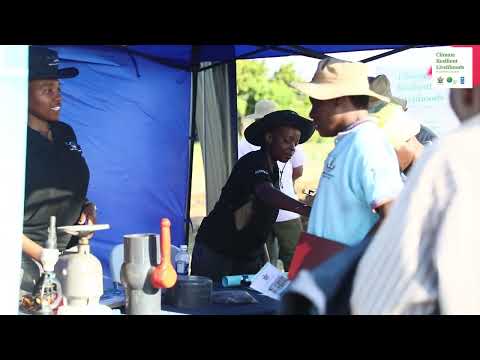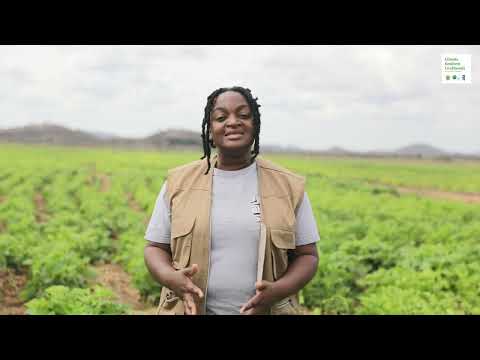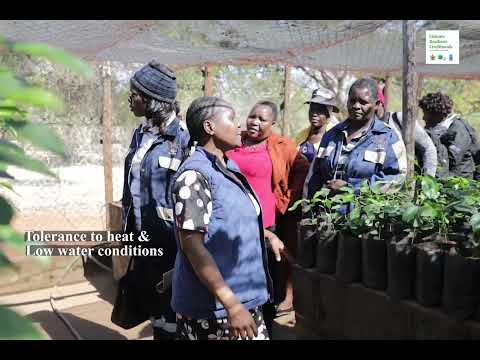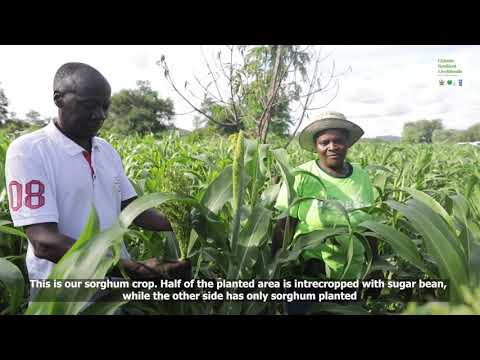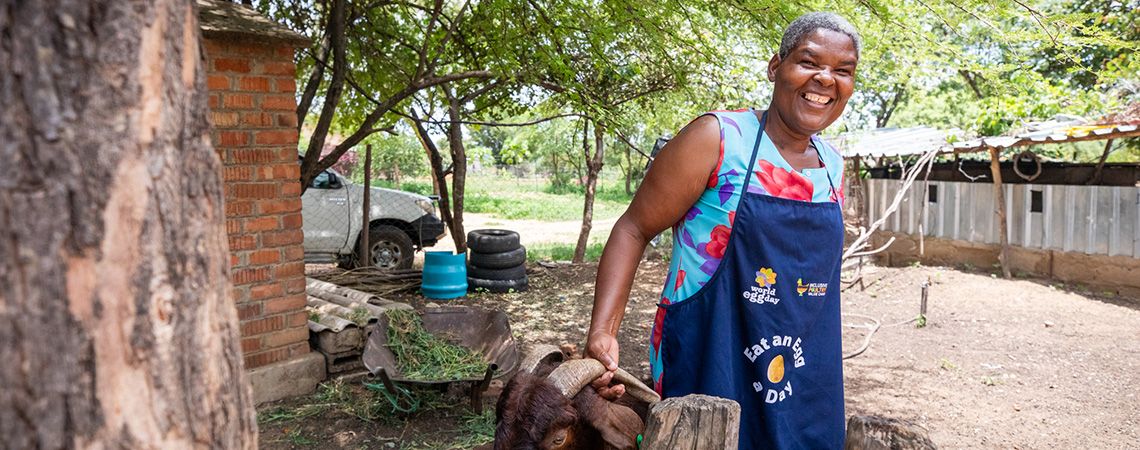
Photo:
This GCF-financed project supports the Government of Zimbabwe in strengthening the resilience of agricultural livelihoods of vulnerable communities, particularly women, in southern Zimbabwe to increasing climate risks and impacts. The project supports vulnerable people, especially smallholder farmers and women to access sufficient, reliable sources of water to enhance the climate resilience of agricultural production, adopt climate-resilient agricultural practices and cropping systems, and access and utilize climate information to more effectively manage climate risk in rain-fed and irrigated agricultural production. The project will benefit an estimated 2.3 million people across Manicaland, Masvingo and Matabeleland South provinces.
The project enhances the water security for smallholder farmers in light of evolving climate risks by enabling revitalization and climate-proofing of irrigation schemes and improving water-use efficiency and enhancing soil moisture management on rain-fed lands. It strengthens the capacities of vulnerable smallholder farmers through farmer field schools and peer-to-peer support to scale up climate-resilient agriculture, with access to resilient inputs, markets, and actionable climate information. The project empowers vulnerable smallholders through multi-stakeholder innovation platforms for climate-resilient agriculture – including value-chain actors and financial intermediaries – to make a transformative shift away from subsistence livelihoods to climate-resilient, market-oriented agricultural livelihoods. The project will leverage government budgets to direct funds to climate-resileint actions in the three provinces. The project will yield significant environmental, social and economic co-benefits, including climate risk-informed, sustainable land management, strengthened gender norms and women’s empowerment, private sector engagement, and increased income and food security including income and productivity benefits over the project’s lifetime.
The project contributes towards the Government of Zimbabwe’s achievement of priorities outlined in its Nationally Determined Contributions (NDC) and climate change plans and strategies including: strengthening management of water resources and irrigation in the face of climate change; strengthening capacities to generate new forms of empirical knowledge, provision of technologies (including conservation agriculture) and agricultural support services that meet climate challenges, and strengthening the capacity of the national meteorological and hydrological services to provide timely climate data.
- Community
- Municipality
- District
- National
- Country Office
- National Governments
- United Nations Development Programme (UNDP)
2,302,120 people (approximately 543,620 direct and 1,758,500 indirect beneficiaries)
- Ministry of Lands, Agriculture, Water and Rural Resettlement of Zimbabwe
- Green Climate Fund
Expected outcomes
Output 1: Increased access to water for agriculture through climate-resilient irrigation systems and water resource management
Output 2: Scaled up climate-resilient agricultural production and diversification through increased access to climate-resilient inputs, practices, and markets
Output 3: Improved access to weather, climate and hydrological information for climate-resilient agriculture
Background and context
The key climate change risks in Zimbabwe stem from increasing temperatures, more variable rainfall, and the intensification of extreme weather events. Increasing temperatures, coupled with declining and more erratic rainfall and greater evapotranspiration, result in increasing river run-off, leading to more aridity, the expansion of marginal lands and decreasing soil water retention capacity. Declining and variable rainfall is projected to cause changes to the growing season, with significant implications for yields and national revenues. Increasing frequency and length of mid-season dry spells has resulted in crop failure in rain-fed farming systems owing to severe water stress during the growing season (agricultural drought). The greatest intensity of impacts is experienced in the southern provinces, where the majority of smallholder farmers, especially women, depend on rainfall and bear the brunt of these climate risks threatening their food and income security.
Southern Zimbabwe is home to 30% of the country’s 14.5 million people and 45% of the country’s rural population, including some of the poorest communities in the country, with poverty prevalence across the Southern provinces ranging from 66-74%. About 7.1 million people in Zimbabwe depend on smallholder farming, most of whom are women.
Over the past five years, Zimbabwe has experienced a sharp decline in the rate of economic growth from 11.9% in 2011 to 1.5% in 2015 . This decline is largely due to underperformance of the agriculture sector, which at its peak contributed 19% to GDP. Agricultural performance in Zimbabwe is heavily impacted by the quality and quantity of rainfall with extreme events such as droughts or floods being the most damaging, along with dry dekads – ten-day rain-free periods during the growing season that cause “agricultural drought”.
While climate change affects the entire country, impacts are experienced most intensely in the southern provinces, where the majority of smallholder farmers are extremely vulnerable to increasing climate hazards as a result of poverty and weak access to services and institutional resources. Most of the farmland in southern Zimbabwe – the provinces of Manicaland, Masvingo and Matabeleland South – falls within Agro-Ecological Regions (AERs) IV and V, which have the lowest agricultural potential in terms of rainfall, temperature and length of growing season. The smallholders in southern Zimbabwe are predominantly communal farmers with very limited access to irrigation – only about 10,000 ha out of the 180,000 ha of irrigated land in southern Zimbabwe are found on communal lands. The remaining farmers are dependent on rain-fed agriculture.
These rain-fed agricultural systems are expected to be subject to drier and hotter conditions, making rain-fed maize production – the primary staple - a significant challenge . With increasing climate risks, water is the key limiting factor for agricultural productivity and adaptation to climate change. In addition to decreasing rainfall and increased evaporation, annual rainfall in AER V is increasingly variable, characterized by erratic and unpredictable rains (short, sharp, isolated storms). Crop yields are extremely low, and the risk of crop failure is increasing to one in three years. The effects of climate-induced droughts, exemplified by the 2015/2016 El Niño, continue to demonstrate that Zimbabwe’s agricultural sector remains highly vulnerable and exposed to increasing climate risks.
According to the 2016 ZimVAC statistics, the highest proportion of food-insecure households at peak hunger period can be found in Matabeleland South (44%), Masvingo (50%) and Midlands (48%) provinces. Zimbabwe spends an average of USD30 million on food relief every year, with expenditures rising to USD 50 million in 2016 when 4.3 million food-insecure people were assisted as a result of El Niño-induced drought. High levels of poverty and food insecurity make the population less able to cope with increasingly harsh and variable climatic conditions. The increasing growth and strength of climate hazards have significant implications for household food security and income in already vulnerable communities in southern Zimbabwe. Key Government Strategies and National Climate Change Response
The Zimbabwe Government has established a five-year economic plan (2013-2018) called the “Zimbabwe Agenda for Sustainable Socio-Economic Transformation (ZimAsset)” . The plan’s vision is to move “towards an empowered society and a growing economy”, execution of which is “to provide an enabling environment for sustainable economic empowerment and social transformation to the people of Zimbabwe” . ZimAsset is an integrated plan with four clusters: a) Food Security and Nutrition; b) Social Services and Poverty Eradication; c) Infrastructure and Utilities; and d) Value Addition and Beneficiation. In 2015, the Government delivered a Ten Point Plan to support operationalization of ZimAsset, of which the following points are most directly relevant to the agricultural sector: “a) Revitalizing agriculture and the agro-processing value chains; b) Advancing Beneficiation and/or Value Addition to the agricultural and mining resource endowment; c) Focusing on Infrastructure development, particularly in the key Energy, Water, Transport and ICTs subsectors; d) Unlocking the potential of Small to Medium Enterprises; e) Encouraging Private Sector Investments.”
To respond to and manage growing climate risks and hazards, the Government of Zimbabwe (GoZ) has formulated a number of key policies and plans, as well as strengthened the corresponding institutional frameworks. GoZ has developed a National Climate Policy and a costed National Climate Change Response Strategy (NCCRS) and has established a Climate Change Management Department in the Ministry of Environment, Water and Climate to coordinate and guide the national response to climate change. In its recently submitted Nationally Determined Contributions (NDC), Zimbabwe commits to promoting adapted crop and livestock development and climate smart agricultural practices; strengthening management of water resources and irrigation in the face of climate change; and promoting practices that reduce risks of losses in crops, livestock and agricultural incomes among other priorities. Zimbabwe is currently developing a National Adaptation Plan with readiness funding from GCF, supported by UNDP.
Addressing the financial limitations in investing in the incremental costs of building climate change resilience of vulnerable smallholder farming systems in southern Zimbabwe
Smallholder farmers in southern Zimbabwe have largely maintained traditional approaches to managing water, soil and crops for food security and income albeit in an increasingly unpredictable environment. The productivity and stability of these agro-ecosystems have deteriorated over the years due to a number of factors, including overly intensive cultivation and land degradation, compounded by increasing climate change-related extreme weather events, primarily droughts and, secondarily, floods. Farmers have been constrained in adapting to hydro-meteorological hazards by their intensity and frequency, which leaves farmers unable to repair irrigation infrastructure and equipment held in common - in particular as they are caught in a cycle of increasing drought or rainy season dry spells under the changing climate, compounded by inadequate consideration of climate risks in the baseline investments in irrigation infrastructure, climate change-induced water deficits, reduced yields and revenues, and heightened food insecurity. Smallholder farmers themselves in southern Zimbabwe clearly lack sufficient resources to invest in addressing the incremental costs of enhancing agro-ecosystem resilience to climate change.
Development investments over the past decades, particularly in relation to irrigation infrastructure, have suffered dramatically from the impacts of climate change. Extreme weather events, such as sudden onset of heavy rains, have damaged or destroyed canals, dams and pumps with sedimentation of erosion of banks and stream beds. Current investments and projects are insufficient to counteract or mitigate growing climate risk as they fail to incorporate climate resilience into infrastructure design. The private sector has little incentive to invest given the risks and uncertainties associated with smallholder production, including technical, capacity, financial and other barriers.
With the impacts of climate change projected to increase over the coming years, the Government of Zimbabwe fully recognizes the significance to the country’s food security of ensuring that vulnerable smallholder farmers have the means, information, capacities, incentives and institutional support they require to manage their resources in a climate risk-informed manner. While some government funds have been made available as co-financing, the current public expenditure budget of the Government of Zimbabwe is limited and insufficient to move smallholder farmers to climate resilient and improved livelihoods. The IMF describes Zimbabwe to be in an ‘external debt distress’ state as of 2017 , and in the absence of stronger economic growth or more concessional financing and debt relief, Zimbabwe has little chance of emerging from its debt problems even in the long term. The government is unable to increase investments in climate resilient agriculture, which not only impacts farmers’ income, but also negatively affects the country’s future economic growth prospects.
The smallholder farmers in the project’s target areas themselves have insufficient income and resources to invest in irrigation and inputs for resilient agricultural livelihoods. GCF resources are indispensable to address the incremental costs of climate-proofing community irrigation systems, promoting climate-resilient agricultural practices, diversifying income and managing climate risk by facilitating public-private partnerships for climate resilient value chain development, and ensuring that climate information is produced and disseminated to decision and policy makers at all levels, from farmer to the national level. Leveraging and combining public and private sector financing for community-level investments for adaptation among smallholders
Output 1: Increased access to water for agriculture through climate-resilient irrigation systems and water resource management
Activity 1.1: Climate proofing irrigation infrastructure for enhanced water security in the face of climate change
Activity 1.2: Field-based training and technology investments for farmers on rain-fed farmlands for climate-resilient water management
Output 2: Scaled up climate-resilient agricultural production and diversification through increased access to climate-resilient inputs, practices, and markets
Activity 2.1: Establish transformative multi-stakeholder innovation platforms for diversified climate resilient agriculture and markets
Activity 2.2: Investments in inputs, technologies and field-based training to scale up the implementation of climate-resilient agricultural production in the face of increasing climate hazards (rain-fed and irrigated farms)
Activity 2.3: Enhance institutional coordination and knowledge management capacities for climate-resilient agricultural production in the face of increasing climate hazards
Output 3: Improved access to weather, climate and hydrological information for climate-resilient agriculture
Activity 3.1: Installation and operationalization of weather/climate and hydrological observation networks
Activity 3.2: Develop, disseminate and build institutional capacities (MSD and AGRITEX) for tailored climate and weather information products
Activity 3.3: Capacity building for farmers and local institutional staff on effective use of climate and weather information and products for resilient water management and agricultural planning
- UNDPRadhika DaveRegional Technical Advisor, Climate Change Adaptation












